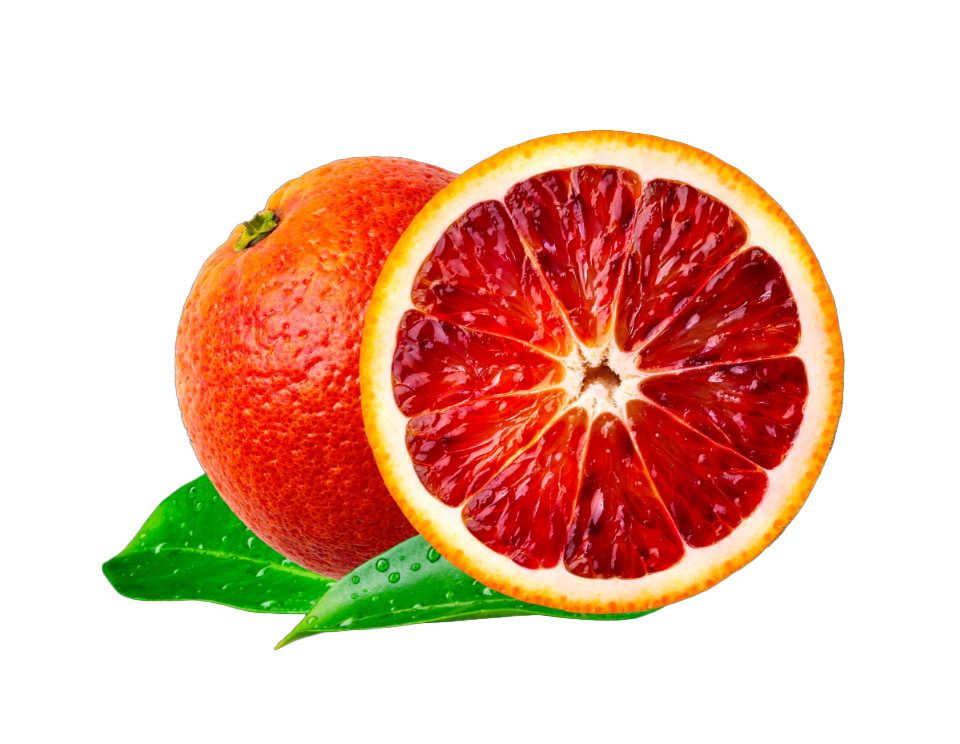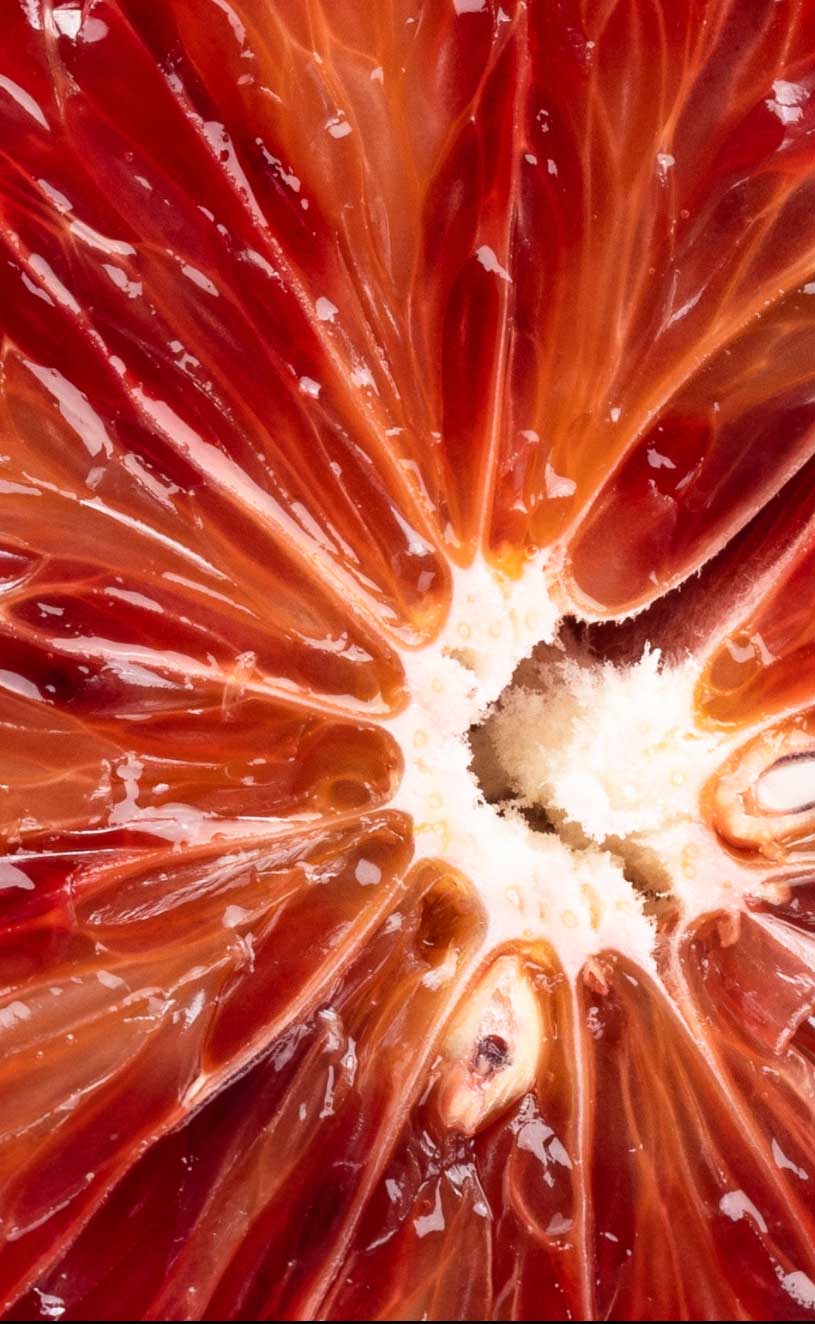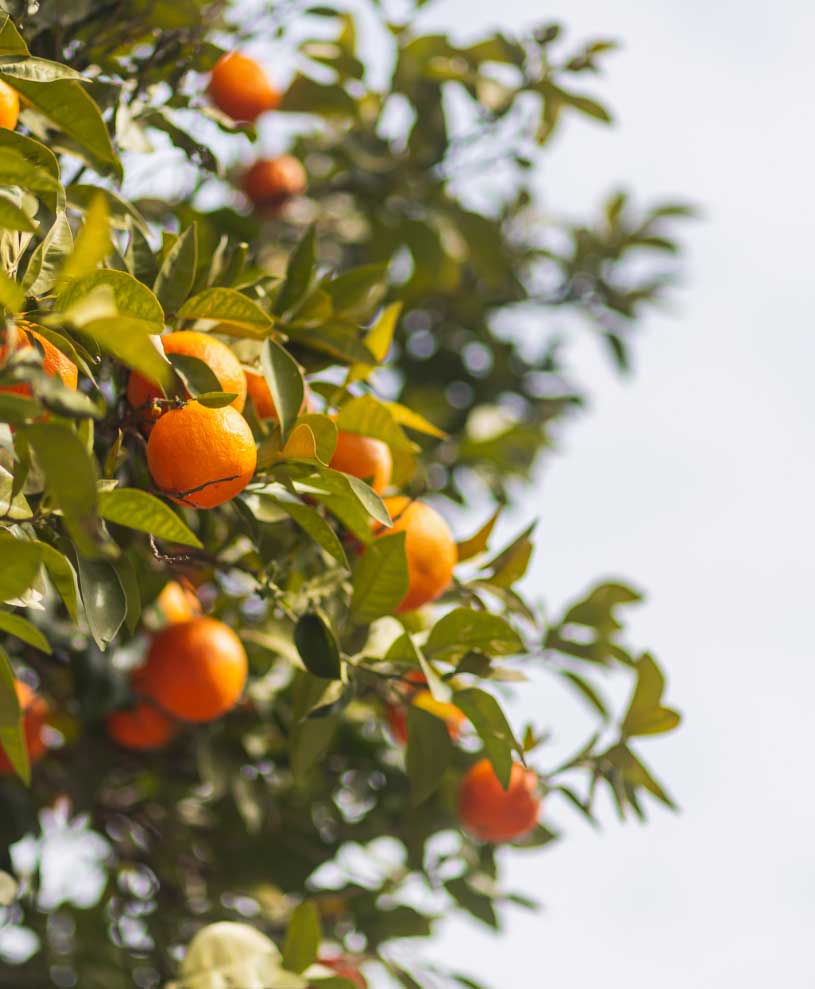
MORO ORANGE VARIETY, THE NATURAL APPROACH TO WEIGHT CONTROL
Why choose Morosil™
MOROSIL™ is a powder extract obtained from the juice of a unique cultivar of Moro red oranges (Citrus sinensis (L.) Osbeck) standardised in anthocyanins, hydroxycinnamic acids, flavanones, and ascorbic acid. “Moro” is the most pigmented blood orange.
Thanks to the synergistic mechanism related to the pool of biophenols contained in the blood orange extract, MOROSIL™ may be used to support healthy weight management improving the body composition as demonstrated in human clinical trials.
SUGGESTED DOSAGE 400 MG/DAY

health benefits
The moro oranges
Characteristics, plant life cycle, and seasonality
The blood orange tree is an evergreen flowering tree, 9–10 m high with large spines on branches. Leaves are green and emit a strong characteristic citrus odor due to the presence of copious oil. As with many other plants, flowering occurs in spring. Orange flowers, called “le zagare”, are white and characterized by a pleasant smell, they are in fact used in the perfume industry or in honey production. The fruit looks like a round berry with a very thick and rough orange peel with pulp ranging from orange to red, according to the variety.
Oranges usually ripen 6 to 12 months after flowering and can be harvested within 2-3 months before they overripe. However, the precise timing for harvesting depends on the variety and the local growing conditions. Moreover, oranges are traditionally hand-picked, with a combined twist and pull motion of the wrist. Alternatively, some growers opt for scissors or shears to cut off the stem. This method is very common when harvesting fruit with a delicate, thin peel. Primarily cultivated in Italy, these Italian varieties have been propagated to other regions with suitable climates for their growth. The main Italian blood orange varieties, which pulps and sometimes peels are rich in anthocyanin pigments, include Sanguinello, Moro, and more recently, Tarocco.
Moro is highly valued for its intense pigmentation. Indeed, the peel is sometimes completely red, while the pulp ranges from burgundy to deep purple. Maturing in the first months of the season, from December to March, Moro enjoys popularity in international markets thanks to its striking coloration. However, it is relatively tart, and in Italy, it finds its primary usage in producing rich and dark-colored juice.


About moro oranges
Uses, traditions and folk medicine
In the Mediterranean basin, blood oranges have been cultivated since the early 19th century, although over time their cultivation has extended to other citrus-producing regions such as China, Australia, and the United States. Indeed, nowadays this particular variety of orange is consumed all over the world as an excellent source of vitamin C, a powerful natural antioxidant that builds the body’s immune system. The blood orange is not just a fruit, but an integral part of the Mediterranean culture and tradition. In ancient times, they have been used as a natural remedy to treat various disorders like constipation, cramps, colic, diarrhea, cough, cold, hypertension etc.
In traditional cuisine, thanks to their distinctive flavor, blood oranges represent a key ingredient in a variety of dishes, including salads, sauces, meat dishes and desserts. Moreover, many regions are known for blood orange cultivation, such as Sicily in Italy, hold festivals and fairs dedicated to this citrus cultivar. These events often feature a wide range of blood orange-based products, including juices, jams, sweets, and alcoholic beverages.
